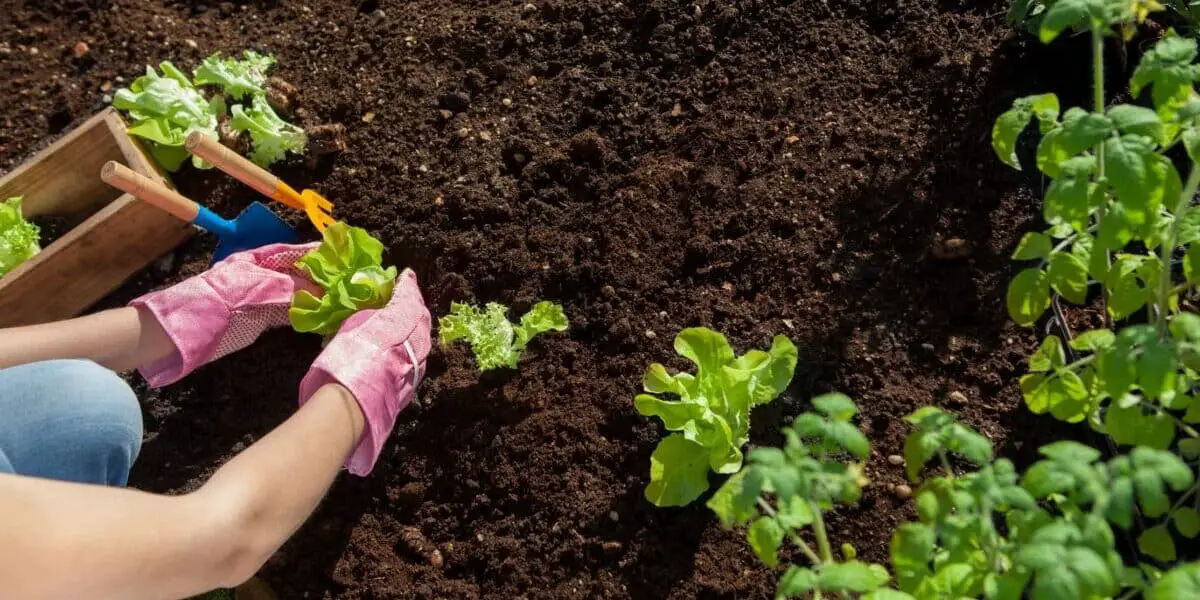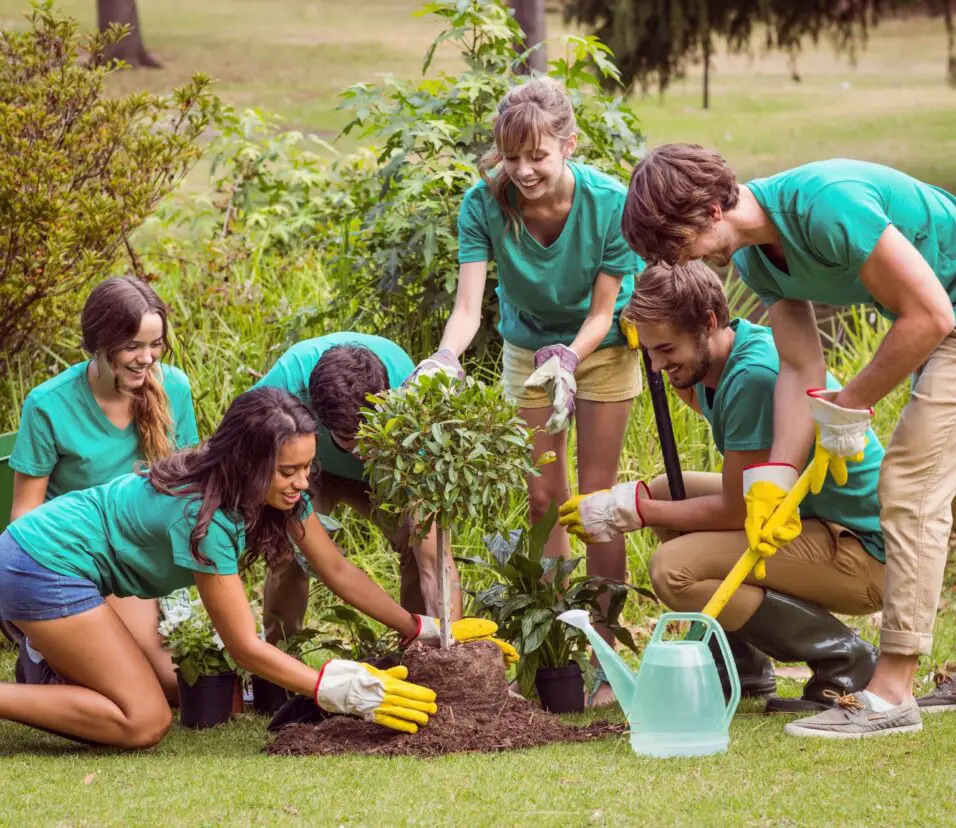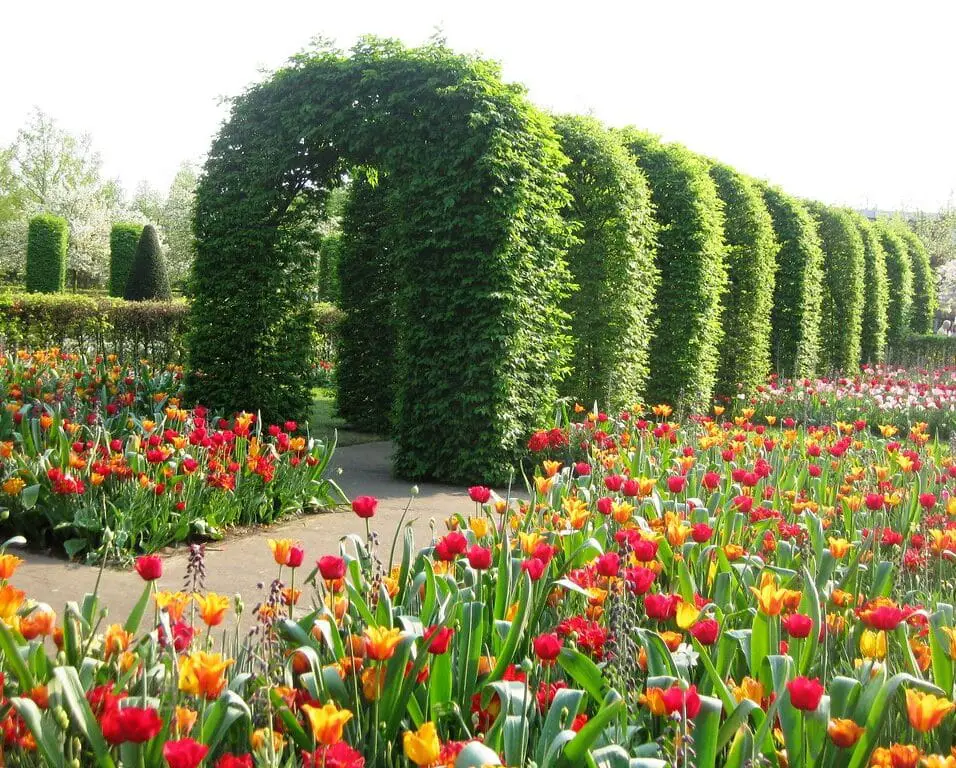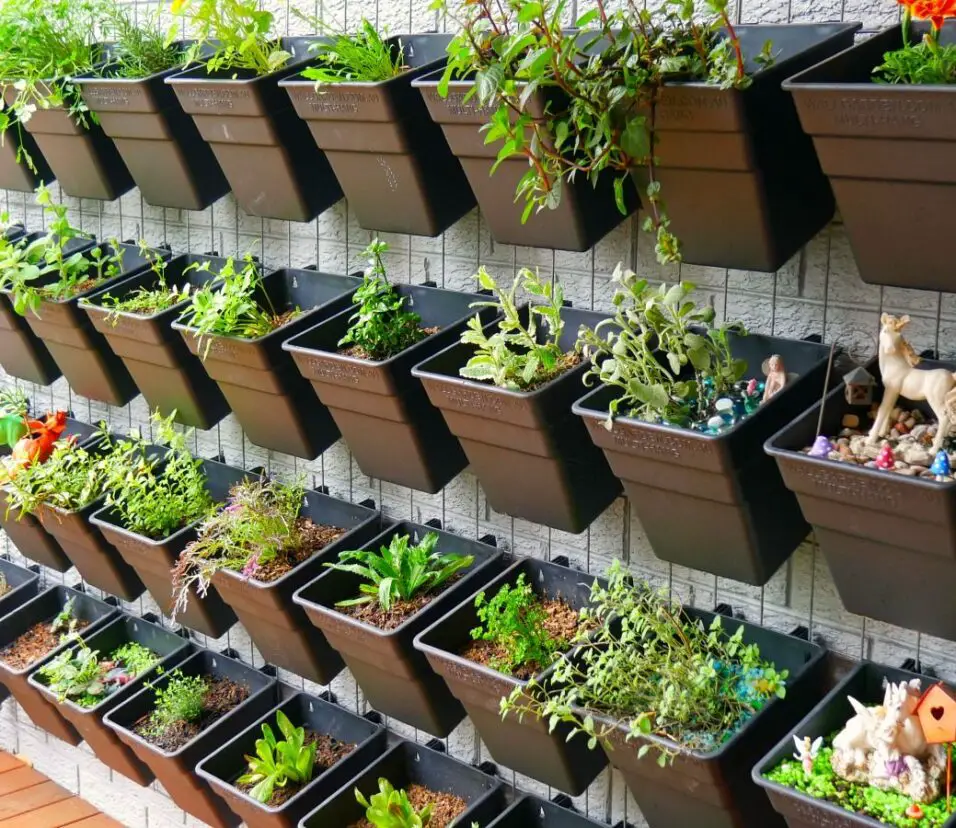What Is Guerilla Gardening
Introduction
What Is Guerilla Gardening: Guerilla gardening is a form of activism that involves the cultivation of plants and gardens in urban areas that are neglected or abandoned. It is a grassroots movement that aims to beautify and improve the environment, often without permission from the landowners or local authorities. Guerilla gardeners typically work under the cover of darkness, using their gardening skills to transform neglected spaces into vibrant and thriving gardens.
Guerilla gardening is often seen as a form of protest against the lack of green spaces in urban areas. Many cities are characterized by concrete jungles, with little room for nature to thrive. Guerilla gardeners aim to challenge this by reclaiming neglected spaces and turning them into oases of greenery. By doing so, they hope to create a sense of community and connection to nature, as well as improve the overall well-being of residents in these areas.
One of the key principles of guerilla gardening tools is the use of non-invasive and low-maintenance plants. These plants are chosen for their ability to survive in challenging urban environments, such as polluted air and limited access to water. Guerilla gardeners often rely on donations and salvaged materials to create their gardens, making use of recycled containers and compost to minimize waste.
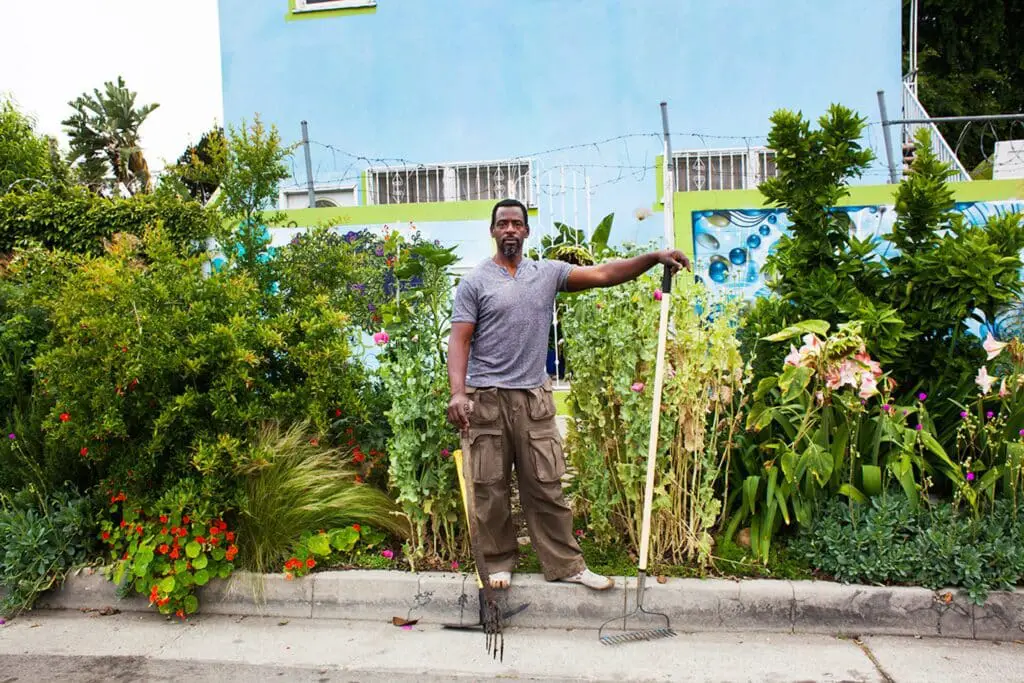
Why is it called Guerilla gardening?
Guerrilla gardening involves producing food or flowers in abandoned public or private locations. In most circumstances, guerrilla gardening is prohibited because “guerrilla” means not being allowed to grow.
Liz Christy and her New York City Green Guerrilla organization coined “guerilla gardening” in the 1970s. They created a community garden on an abandoned property, starting a global trend. The name “”guerilla”” describes the group’s style of acting without authorization or norms.
The word “”guerilla”” emphasizes the disruptive aspect of guerilla gardening. Guerilla gardeners battle urban deterioration and neglect by transforming neglected sites into lively gardens. They regularly beautify and improve their surroundings without property owners’ or municipal authorities’ authorization.
Individuals and groups may manage their surroundings and make positive changes through guerilla planting. People may connect with nature, build community, and practice sustainability. The phrase “”guerilla gardening”” describes this grassroots movement’s unusual and rebellious attitude.
What is the meaning of guerrilla gardener?
Guerrilla gardening involves growing plants in a public space, usually in an untended area, to improve the environment.
Guerrilla gardening involves growing on abandoned locations, neglected public spaces, or private property without legal permission. Planting and creating green spaces is a type of activism that reclaims urban spaces.
Liz Christy and her Green Guerrilla organization in New York City popularized “guerrilla gardener” in the 1970s. They inspired others by turning an abandoned lot into a community garden. Since then, guerrilla gardening has spread to cities worldwide.
Guerrilla gardeners sneak into neglected regions at night to plant flowers, veggies, and trees. They beautify cities, establish wildlife habitats, and encourage sustainable living through gardening. The idea is to highlight these neglected locations’ potential and inspire action.
The nonviolent protest of guerrilla gardening targets urban decline, environmental damage, and a lack of green places. It questions land ownership and urban planning priorities. Guerrilla gardeners attempt to build community, enhance quality of life, and raise environmental consciousness by reclaiming neglected areas.
Guerrilla gardening is a creative and beneficial method to interact with the urban environment, despite its defiance. It lets people govern their surroundings and improve their communities. Guerrilla gardeners inspire others to see the possibilities in abandoned locations and take action for a greener, more sustainable future.
What is an example of a guerilla gardening?
Here are some guerrilla planting tips: Seed bombing means putting seeds in soil balls and throwing them in empty areas. empty lot gardening is the act of growing plants or flowers in an empty lot.
Guerilla gardening is the criminal growth of plants and gardens in places that have been left empty or ignored. People or groups can take back and improve abandoned cities. Guerilla gardening makes empty lots into lively public gardens.
These empty homes bring in trash and bugs, which makes the area look bad. Gestapo workers clean up these places and turn them into green spaces. The pick up trash, pull weeds, and grow plants, flowers, and herbs. These gardens make the neighborhood look nicer and give people healthy food.
“Seed bombs” are another way to grow without permission. Pots, soil, and seeds come together to make seed bombs. They are dumped in empty lots, along the sides of roads, and on properties that have been ignored and could use some plants. Seed bombs break apart when they come in contact with dirt or rain, which lets seeds grow and sprout.
Guerilla gardeners work at night to avoid getting caught and getting in trouble with the law. They think what they’re doing is civil disobedience because they don’t like how public areas are being ignored. Guerilla gardeners want to get other people to love their towns and make them more beautiful and sustainable by taking action.
How do you do guerilla gardening?
Determine what plants to use in your garden.
- Select hardy plants that can thrive with intermittent care.
- Choose plants that naturally grow in your area.
- Be aware of conditions the plot of land that you will be growing on.
- Choose inexpensive plants.
Guerilla planting is growing and taking care of plants in public places without permission.
People can make empty or rarely used areas bright and green by painting them or putting plants in them.
To do guerilla planting, you need to do a few things. First, choose a good place to plant. Once you’ve picked a spot, check the dirt and sunlight levels. It will help you figure out what kinds of plants would do well there.
Next, get your guerilla planting gear together. You might need gloves, a trowel, compost, manure, seeds or seedlings, and seeds. There should also be a watering can or other source of water close by. These tools will help you get the dirt ready, plant seeds or seedlings, and keep your garden in good shape.
Think about whether stealth planting is legal and what the risks are before you start. Some people think of guerilla gardening as an act of mischief, while others see it as a way to improve communities. Pay attention to the local rules and move slowly. Getting other people involved in your guerilla gardening projects can help and lower the risks.
After picking a spot, getting your tools together, and thinking about the legal problems, you can start guerilla planting. Fork the ground and get rid of the weeds. Do what it says and plant your seeds or sprouts. Make sure your garden is healthy and give it lots of water, especially when the weather is dry. Your guerilla plant will bloom and make the town look better if you wait.
Who invented guerrilla gardening?
Liz Christy and her Green Guerrilla group came up with the term “guerrilla gardening” in New York City’s Bowery in 1973.
People do “guerrilla gardening” when they grow plants on private land or in public places that have been left empty. Activism is what makes towns better by growing food or making green spaces. Guerrilla gardening has become more common recently, but who came up with the idea?
In the 1970s, the Green Guerrillas set up the first guerrilla gardens in New York City. On empty lots, they put up community gardens. Liz Christy’s Green Guerrillas took over empty land and planted lovely gardens to fix the problem of towns falling apart and not having enough green space. Their work made the city look better and gave people power and a sense of community.
People and groups all over the world have started guerrilla planting projects since then.
In the past few years, the trend has been driven by concerns about food security, environmental health, and the need for more green areas in cities that are easy to get to.
Guerrilla planting is a good way to make neighborhoods better. People can work together to make things better even if they don’t have any money or legal help. They might turn empty lots into beautiful gardens.
Guerilla gardening is growing plants in places that aren’t allowed to have them, like empty lots, public spots that aren’t used, or private property. It lets people or groups take back and improve these places without permission from the government.
“Guerrilla gardening” was first used by Liz Christy and her Green Guerrilla group in New York City in the 1970s. Gestapo gardening has spread all over the world, and people who do it use a variety of methods to turn empty spaces into beautiful gardens.
What are the main goals of guerilla gardening?
The goal of guerilla gardening is to make abandoned areas look better, get people involved, and raise awareness about environmental issues. By turning empty lots or neglected public spaces into green areas, guerrilla gardeners try to make cities better places to live and more environmentally friendly.
Thoughts on who owns land and public space are raised by guerilla planting. It makes people want to make their neighborhoods better, even if they don’t own the land they farm on. Guerrilla farmers want to get other people to make their communities better.
Guerilla gardening often employs unconventional gardening techniques that are not commonly used in traditional gardening. For example, guerilla gardeners may utilize seed bombs, which are small balls of clay, compost, and seeds that can be thrown or scattered in hard-to-reach areas. This allows plants to grow in spaces that would otherwise be inaccessible. Additionally, guerilla gardeners may engage in “”tactical urbanism,”” which involves temporarily transforming urban spaces to create temporary gardens or green installations.
What are the main goals of guerilla gardening?
Guerilla gardening is a form of activism that involves gardening on land that the gardeners do not have legal rights to use, such as abandoned lots, neglected public spaces, or private property. The main goals of guerilla gardening are to beautify and improve these spaces, increase access to fresh food, and promote community engagement and environmental awareness.
One of the primary goals of guerilla gardening is to transform neglected and unsightly areas into vibrant and aesthetically pleasing spaces. By planting flowers, trees, and other plants, guerilla gardeners aim to create visually appealing environments that uplift the surrounding community. This not only improves the overall appearance of the area but also has a positive impact on the mental well-being of the people who live or pass by these spaces.
Another important goal of guerilla gardening is to increase access to fresh and healthy food, especially in urban areas where food deserts are prevalent. Guerilla gardeners often grow fruits, vegetables, and herbs in public spaces, making them available to anyone in the community. This helps address issues of food insecurity and promotes a more sustainable and self-sufficient lifestyle.
How does guerilla gardening differ from traditional gardening practices?
Guerilla gardening is a unique approach to gardening that differs from traditional gardening practices in several ways. Firstly, guerilla gardening is characterized by its subversive nature. It involves gardening on land that the gardeners do not have legal rights to, such as abandoned lots or neglected public spaces. This is in stark contrast to traditional gardening, which typically takes place in private gardens or designated public parks.
Another key difference is the emphasis on community involvement in guerilla gardening. Traditional gardening is often a solitary activity, with individuals tending to their own gardens. In contrast, guerilla gardening encourages collaboration and collective action. It brings together like-minded individuals who share a passion for transforming neglected spaces into vibrant green areas. This sense of community is an integral part of guerilla gardening, as it fosters a sense of ownership and pride in the shared spaces.
Guerilla gardening often employs unconventional gardening techniques that are not commonly used in traditional gardening. For example, guerilla gardeners may utilize seed bombs, which are small balls of clay, compost, and seeds that can be thrown or scattered in hard-to-reach areas. This allows plants to grow in spaces that would otherwise be inaccessible. Additionally, guerilla gardeners may engage in “”tactical urbanism,”” which involves temporarily transforming urban spaces to create temporary gardens or green installations.
What are some common techniques used in guerilla gardening?
Guerilla gardening involves a variety of techniques to transform neglected or unused spaces into vibrant and productive gardens. One common technique is seed bombing, which involves creating small balls or capsules filled with seeds and soil. These seed bombs are then thrown or scattered in areas that could benefit from some greenery. This method allows for the easy dispersal of seeds in hard-to-reach or inaccessible areas, such as vacant lots or roadside verges.
Another technique used in guerilla gardening is guerrilla grafting. This involves grafting fruit-bearing branches onto existing urban trees, such as apple or pear branches onto ornamental trees. By doing so, guerilla gardeners aim to create a more diverse and productive urban landscape, providing free and accessible food for the community. Guerrilla grafting requires some knowledge of horticulture and careful selection of compatible tree species.
Additionally, guerilla gardeners often utilize container gardening as a technique. This involves planting in containers such as pots, buckets, or even old tires, allowing for flexibility and mobility in creating gardens. Container gardening is particularly useful in urban areas where space is limited or where the soil quality may be poor. It allows for the creation of gardens on rooftops, balconies, or even on the streets, bringing greenery to otherwise concrete-dominated environments.
In summary, some common techniques used in guerilla gardening include seed bombing, guerrilla grafting, and container gardening. These techniques enable guerilla gardeners to transform neglected spaces, increase biodiversity, and bring greenery to urban environments. By utilizing these techniques, guerilla gardeners are able to create beautiful and productive gardens that benefit both the community and the environment.” “
Can you provide examples of successful guerilla gardening projects?
Yes, there have been numerous successful guerilla gardening projects around the world that have transformed neglected urban spaces into vibrant green areas. One notable example is the “”Liz Christy Garden”” in New York City, which is considered the first community garden in the United States.
Another successful guerilla gardening project is the “”GuerillaGrafters”” in San Francisco. This group focuses on grafting fruit-bearing branches onto non-fruiting public trees, creating a network of urban fruit trees. Their efforts have not only beautified the city but also provided free and accessible fresh fruits for the community.
Furthermore, the “”Greenaid Seedbomb Vending Machines”” in Los Angeles have been a successful guerilla gardening initiative. These vending machines dispense seedbombs, which are small balls of clay, compost, and seeds. People can simply throw these seedbombs into neglected areas, and over time, they sprout into beautiful plants, bringing life and color to otherwise barren spaces.
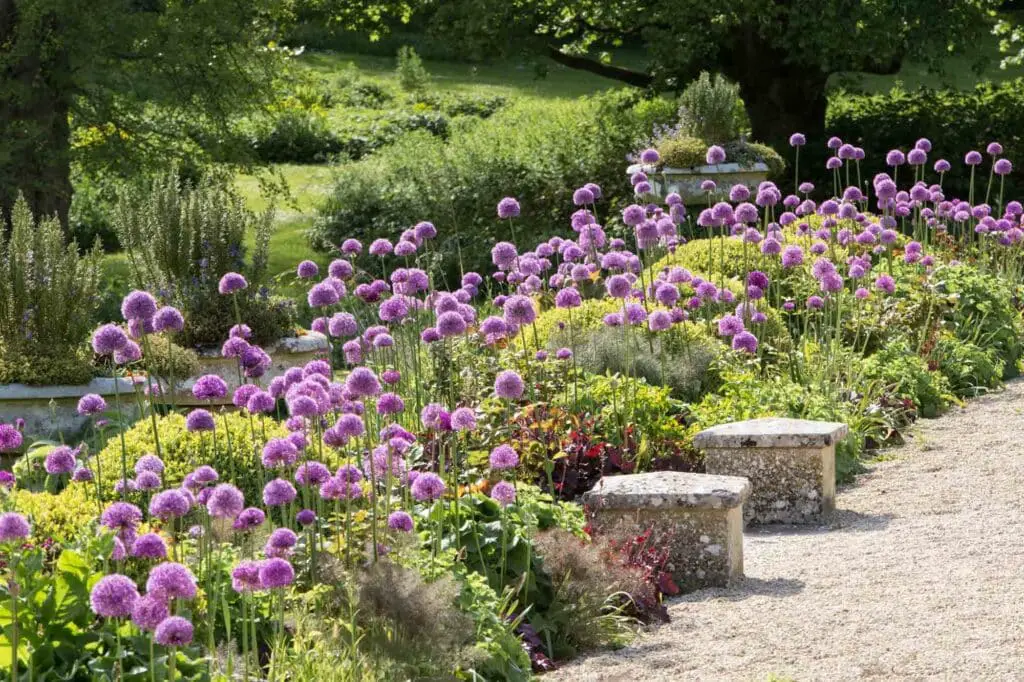
Conclusion
One of the key benefits of guerilla gardening is its ability to beautify and improve neglected areas. By planting flowers, trees, and vegetables in abandoned lots or neglected public spaces, guerilla gardeners can transform these areas into visually appealing and inviting spaces. This not only enhances the aesthetic appeal of the neighborhood but also creates a sense of community pride and ownership. Guerilla gardening can also have positive effects on mental health by providing a peaceful and calming environment for individuals to enjoy.
Another important aspect of guerilla gardening is its contribution to food security. This can help address issues of food insecurity and promote healthier eating habits. Additionally, guerilla gardening can also serve as a form of education, raising awareness about the importance of sustainable food production and encouraging individuals to grow their own food.
Overall, guerilla gardening is a powerful tool for individuals to reclaim and transform neglected urban spaces. It not only beautifies and improves the aesthetic appeal of these areas but also contributes to food security and environmental sustainability. By engaging in guerilla gardening, individuals can make a positive impact on their communities and inspire others to take action. As cities continue to grow and urban spaces become increasingly limited, guerilla gardening offers a creative and sustainable solution to create green and vibrant spaces for all to enjoy.



